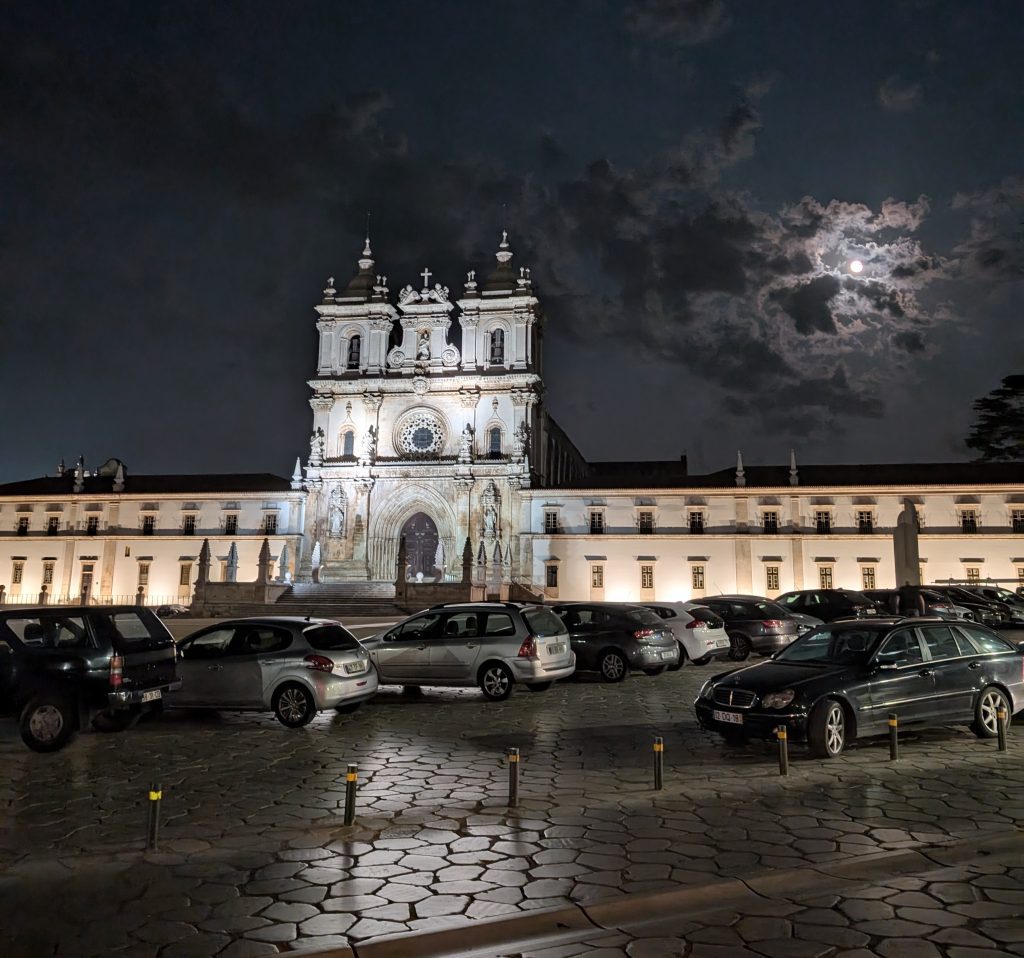Sep 17 – Travel day from Coimbra to Alcobaca
Awoke to very smoky skies in Coimbra due to nearby fire and news of bad fires that had popped up in the North, close to Porto. On our journey, we had two iconic stops – Coninmbra Roman Ruins and Knights Templar Castle in Tomar.
The Conimbriga Roman Ruins is said to be Portugal’s best Roman sight. We first stopped in the town of Condeixa-a-Nova to visit PO.RO.S – Portugal Roman Museum in Sicó. This modern museum presents the history of the Roman times in Portugal. It’s a short drive (not a walk) to the actual ruins of the once thriving city of Conimbriga. We wandered the ruins first before a quick survey of another museum. We saw intact mosaic floors, a large public bath complex, partial walls of shops and homes, part of the road that led from Lisbon to Braga, a defensive wall, a theatre and part of an aqueduct. The most important find was the House of Fountains which sits under a protective roof.
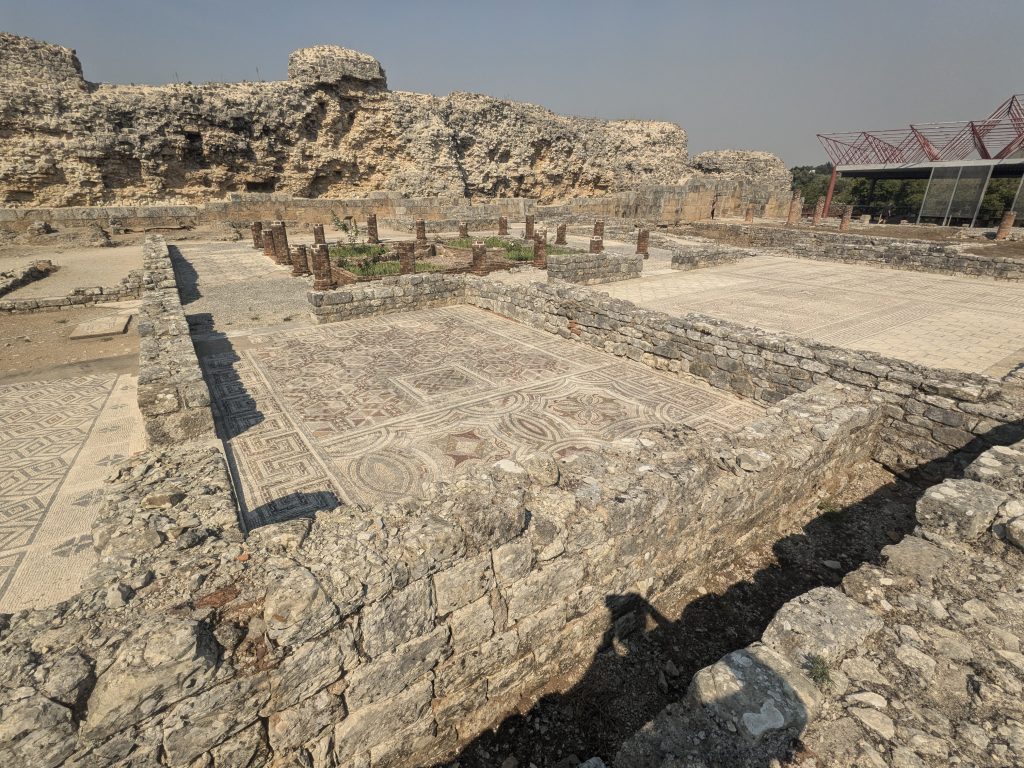
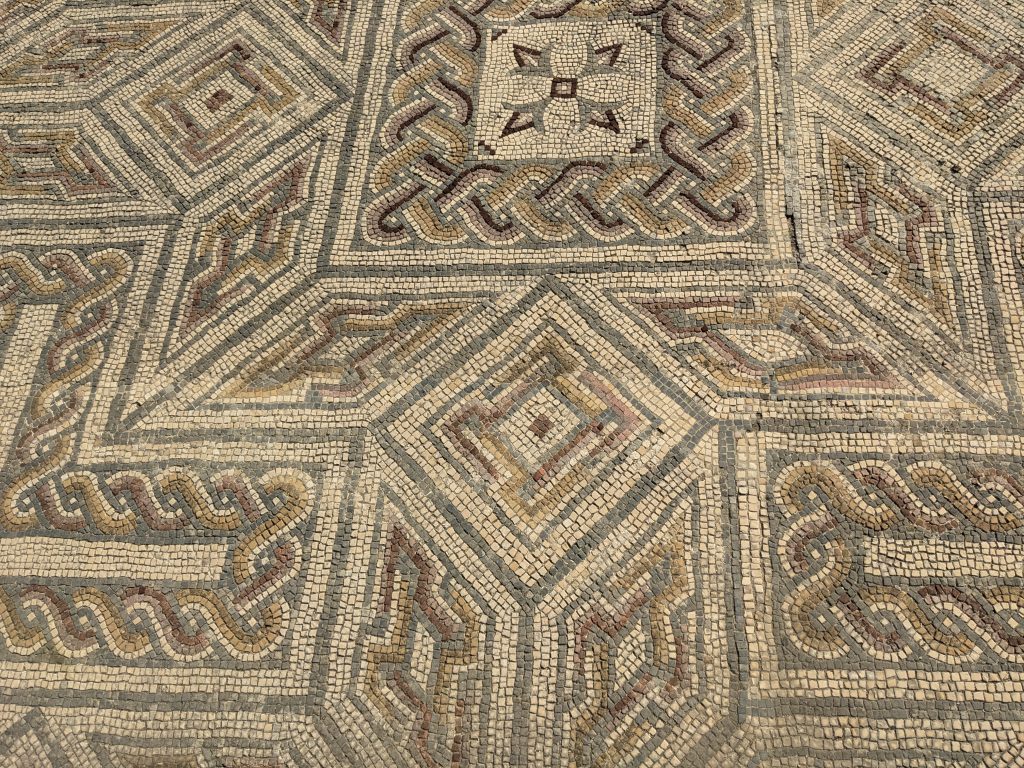
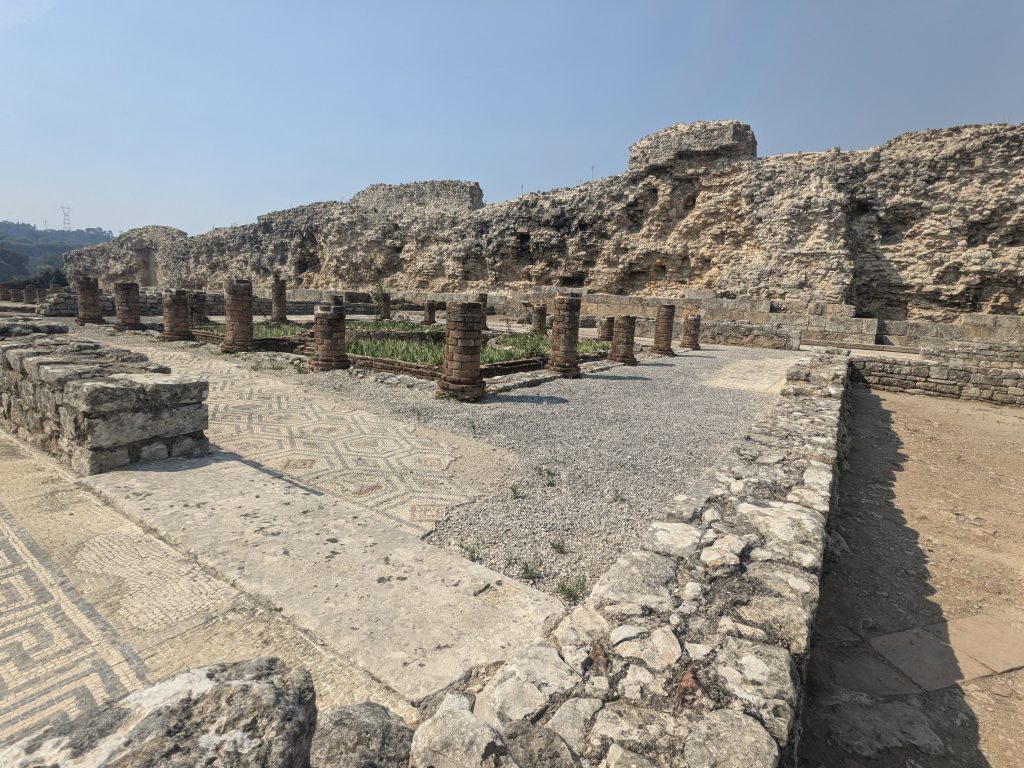
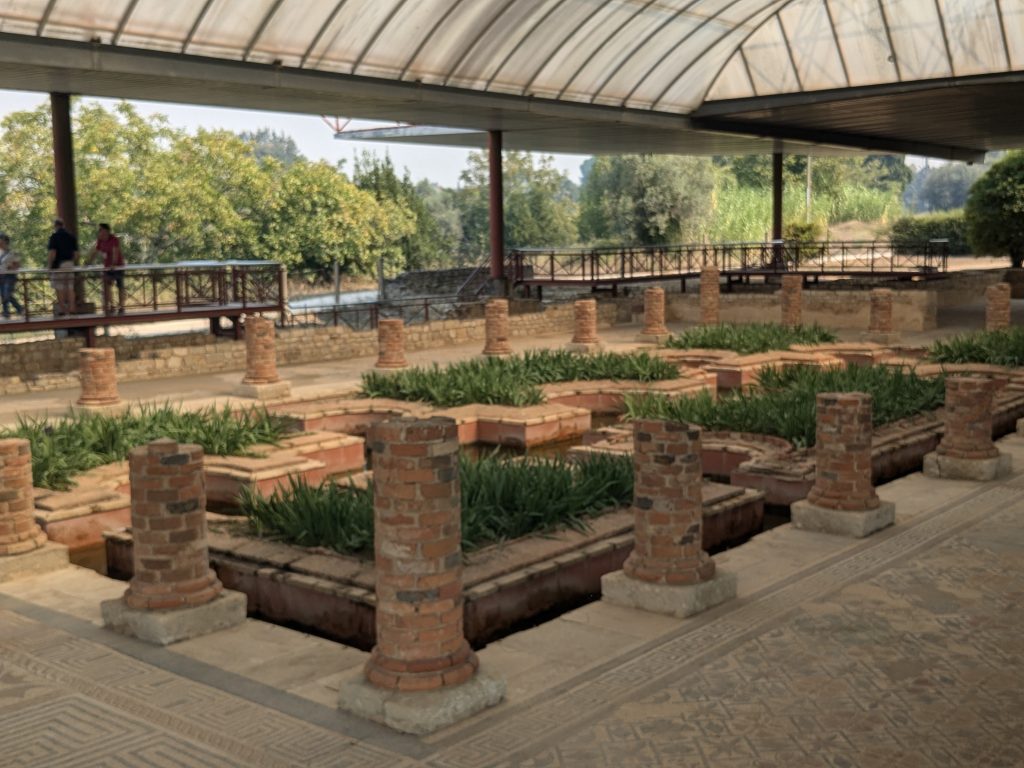
Tomar is a quaint little town that sits on the Nabao River. It is best known for the medieval masterpiece that sits at the top of a hill overlooking the town. The old town and riverfront promenade looked like Tomar could be a nice place to spend a couple of nights. Though Rick Steve’s suggests merely a drive by like we did.
The parking angel did not come through as quickly as she normally does. The guys found a spot on the other side of the river. Zoe and I snagged a table at a popular restaurant, Restaurante Lusitania or Tasquinha da Mitas.
The official sites are the Castle of the Knights Templar and the Convent of Christ. Tomar was originally a Garrison town built to support the castle and the Christian mission of the Knights.
The castle sits up on a hill so we took a Bolt up. There were several bus loads of group tours. We did our best to avoid them as we wandered through the castle and convent. The “Instagrammers” were annoying as they posed at every picturesque spot.
The Knights Templar was a rich organization – both a Christian charity and Europe’s first great banking organization. People deposited money with the Templars in the West and then made withdrawals along their pilgrimage as they traveled East. The Templars built about a thousand forts between Portugal and Jerusalem to aid Christian pilgrims. The Templars morphed into Knights of Christ in 14th century and were lead by several Portuguese kings including Henry the Navigator who used its wealth to fund some of his voyages.
Inside both the castle and the Convent was very little furniture or decor. In 1834 the Portuguese kings outlawed all religious orders and most of the treasures were sold, stolen or destroyed. Some were hidden.
Memorable places in this tour was the Rotunda (Charola dos Temporaries), built in the 12th century to model the Holy Sepulchre of Jerusalem. Two stories, octagonal shape, supported by 8 pillars, paintings and statues from the 16th century. Shaking my head at the line of tourists taking their pictures under a statue of Christ on the cross.
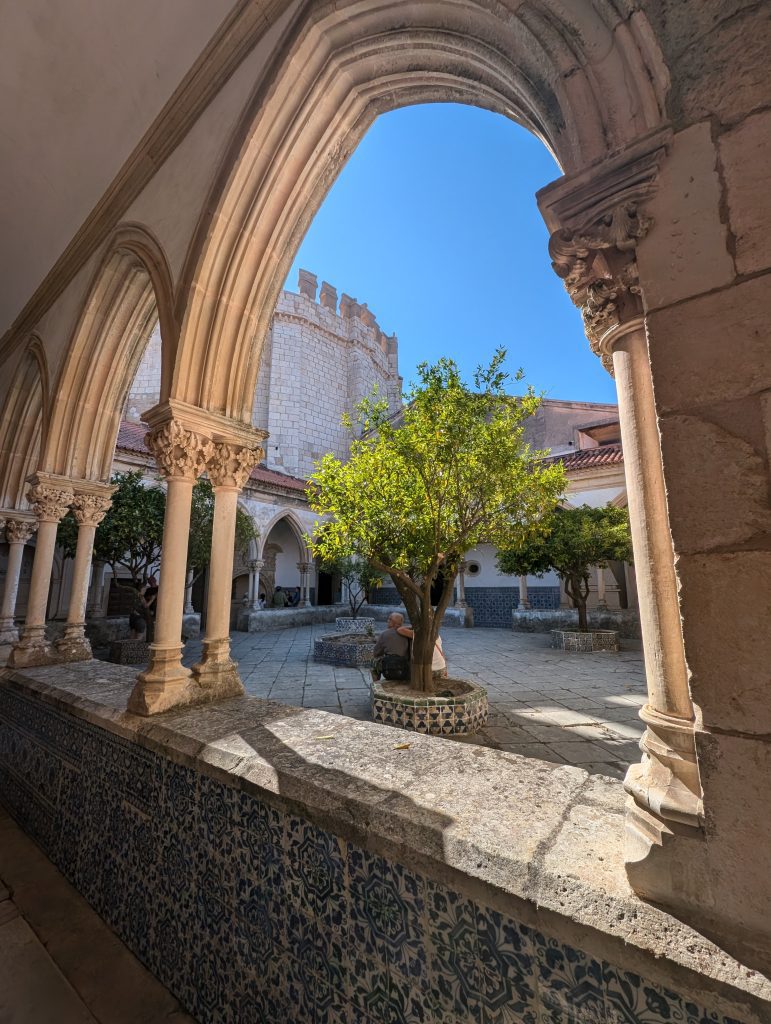
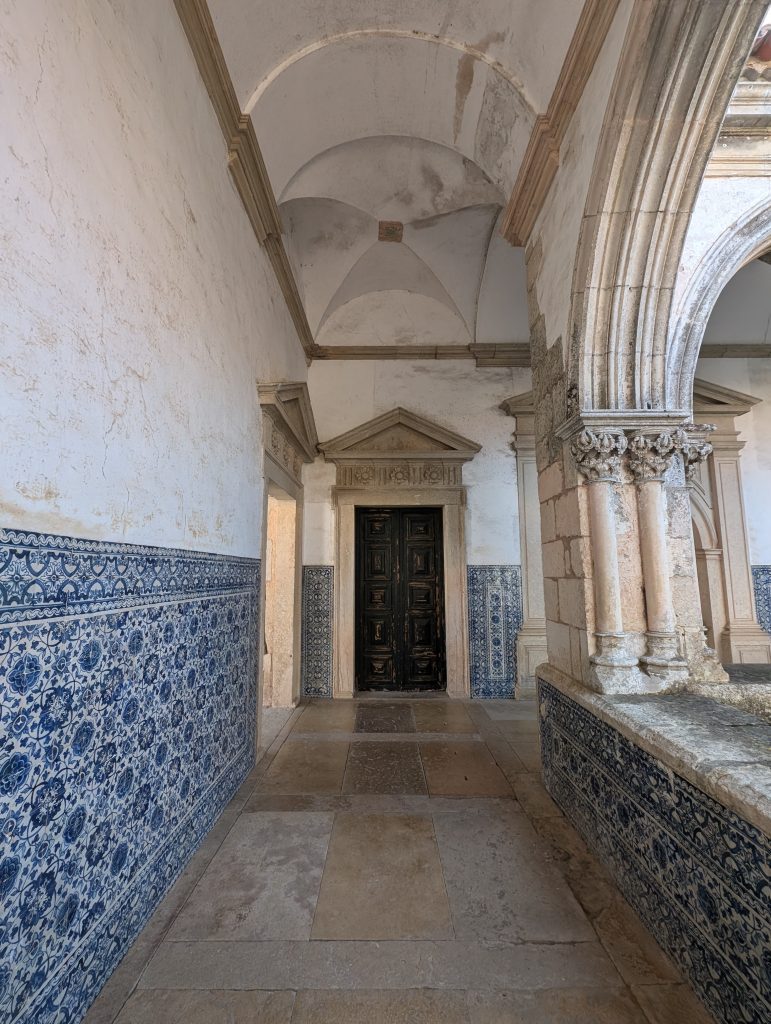
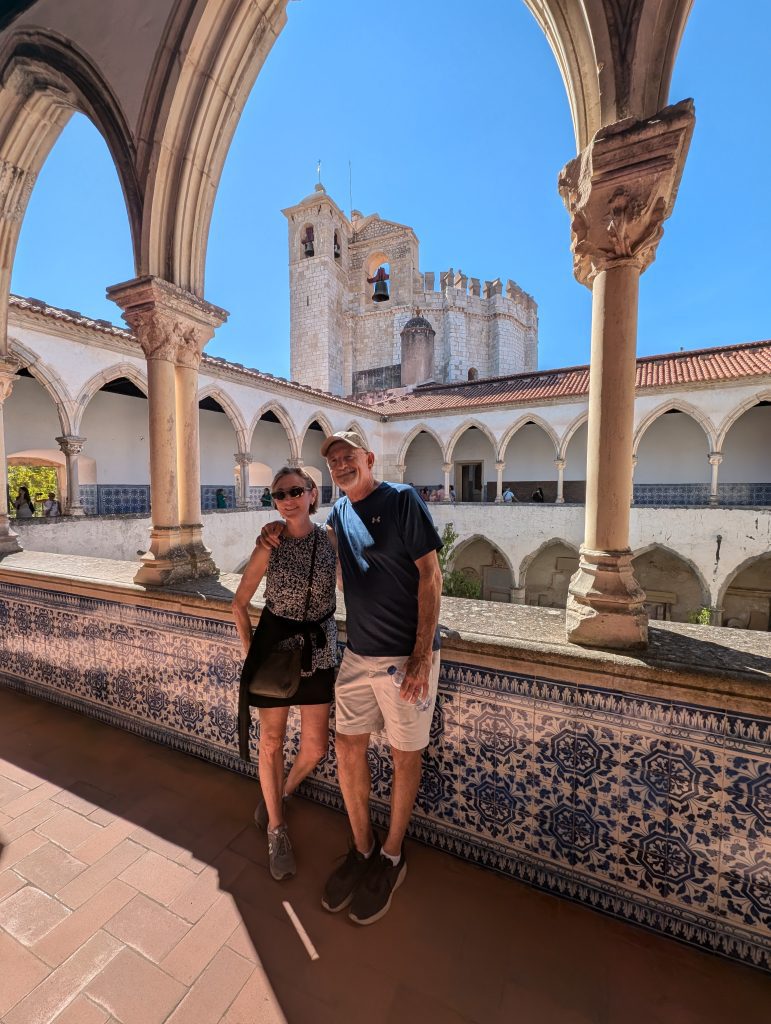
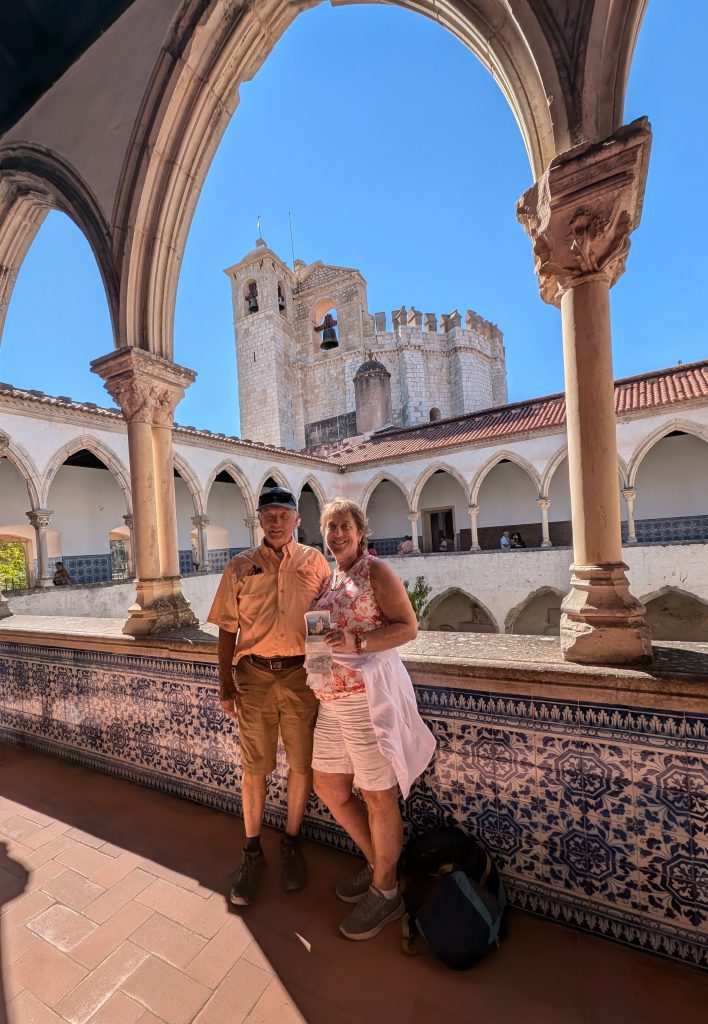
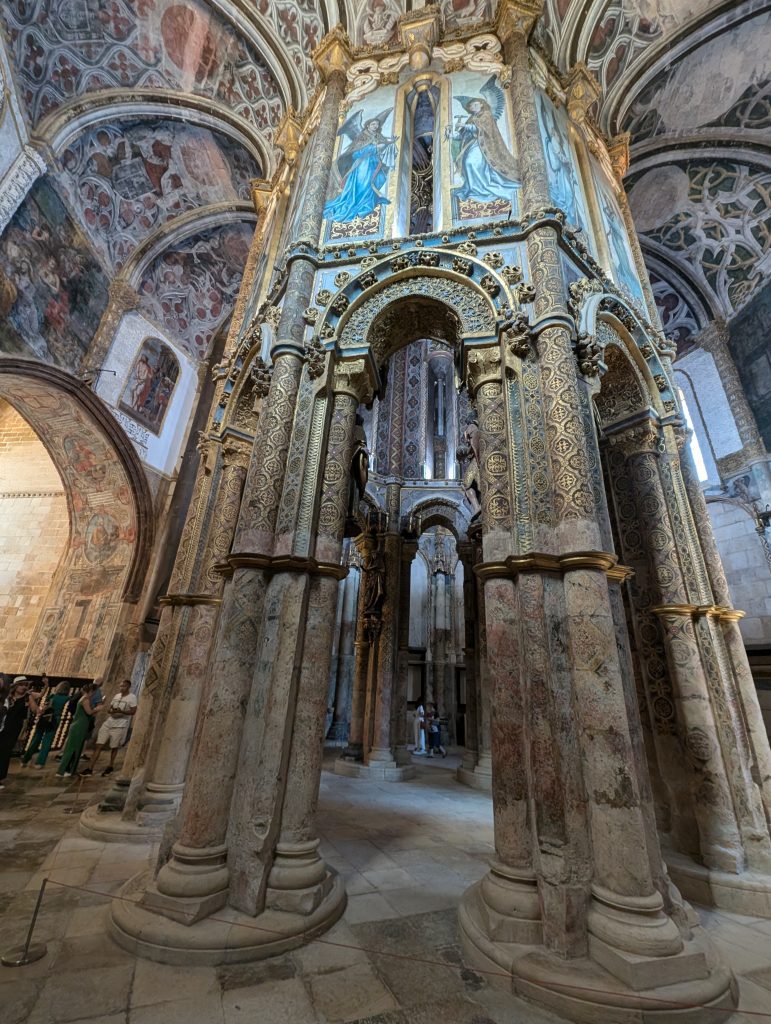
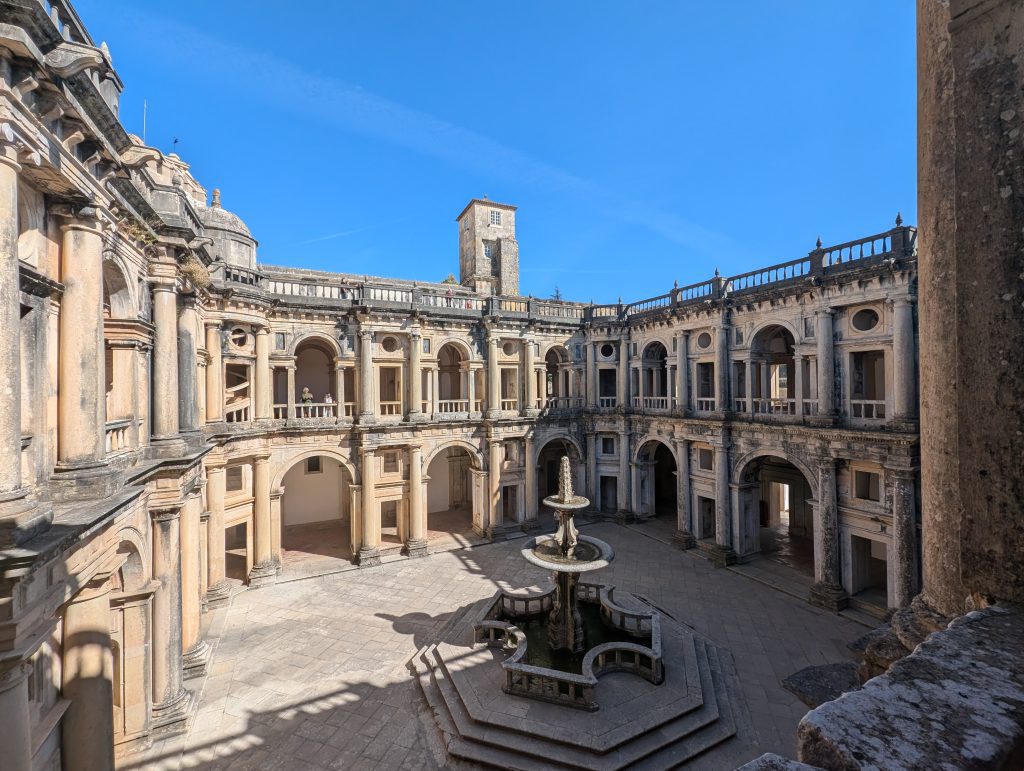
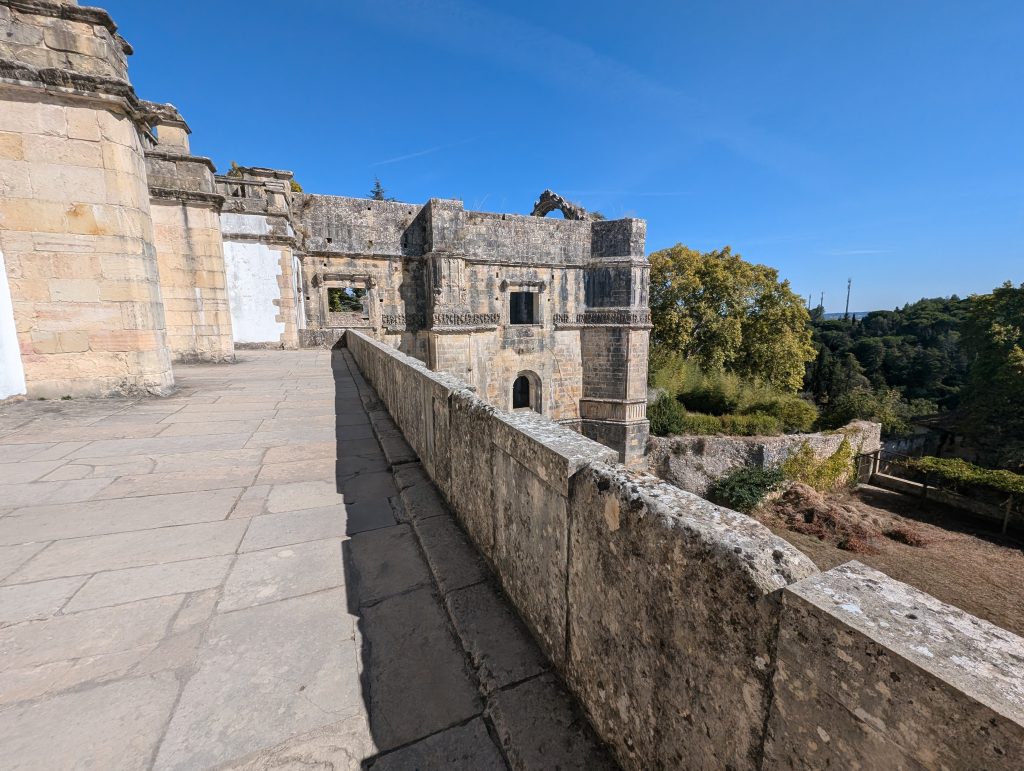
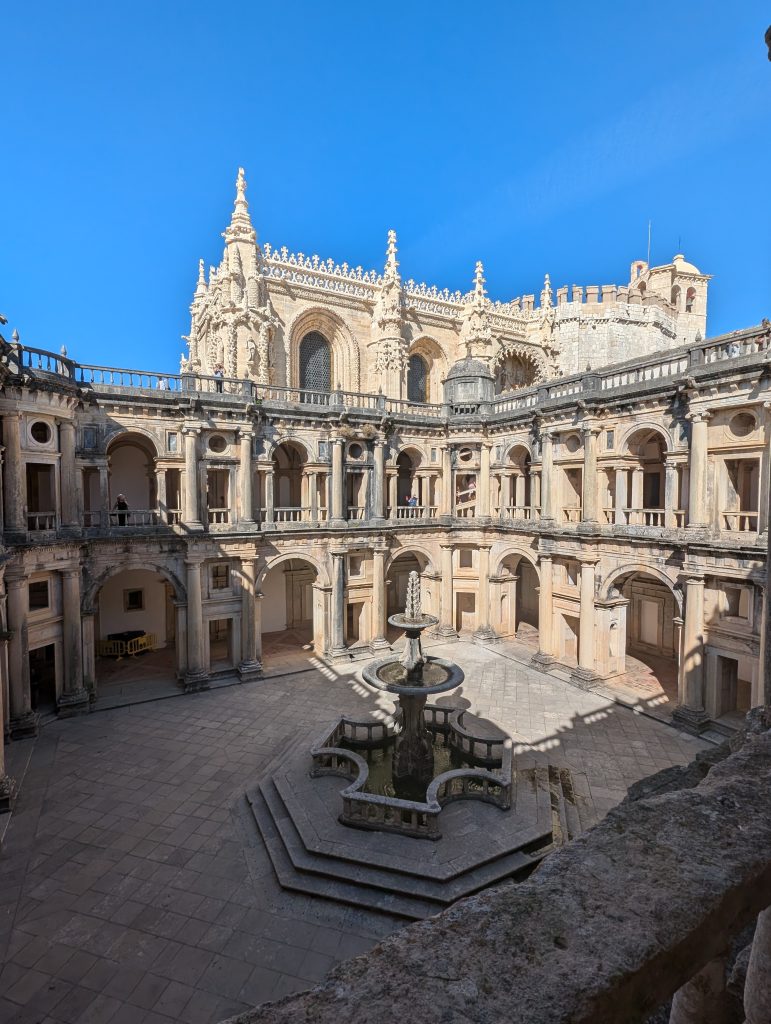
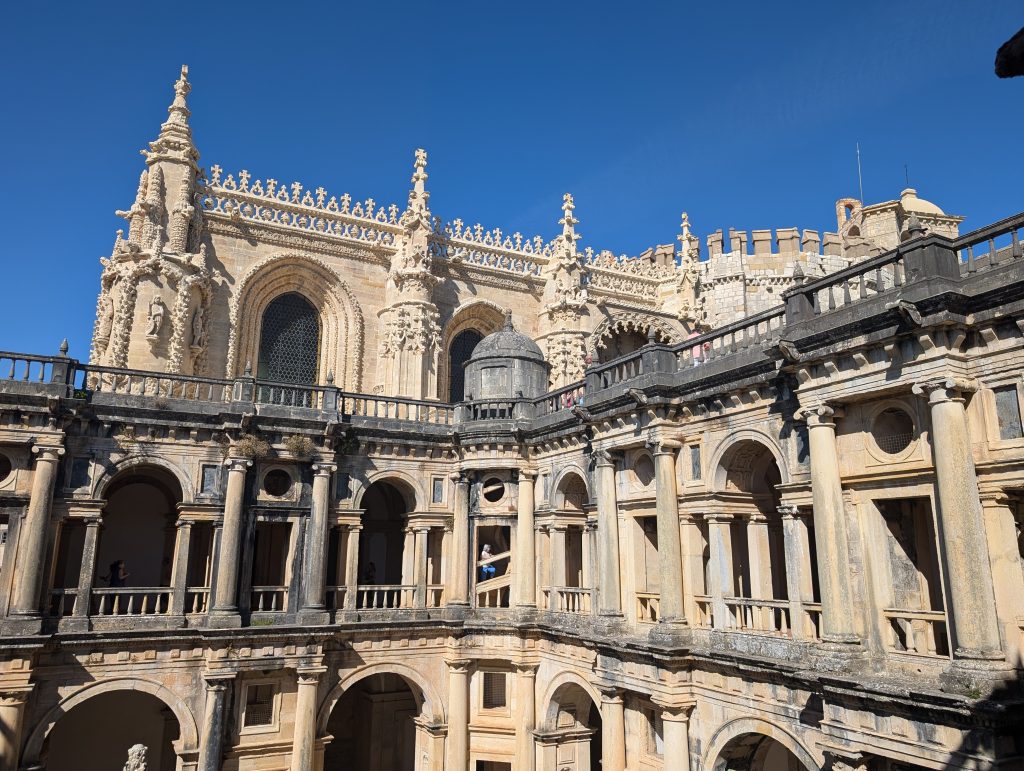
I had torn out some pages from an old Michelin travel guide. A line drawing and description of a Manueline style window intrigued me to go looking for the window. The intricate carvings on the exterior of the window are visible from a terrace on the upper floor of the cloister, easy to miss.
We popped into an antique store on our walk down from the castle. The owner was pleased to chat with us and show off his family photo from 1900.
We were pleased to arrive in Alcobaca when we drove up to our inn, the Challet Fonte Nova. Once the home of a wealthy family, it is now a elegant inn managed by the granddaughter of a previous owner. High ceilings, period appropriate furniture, a terrace, spa, sumptuous breakfast.
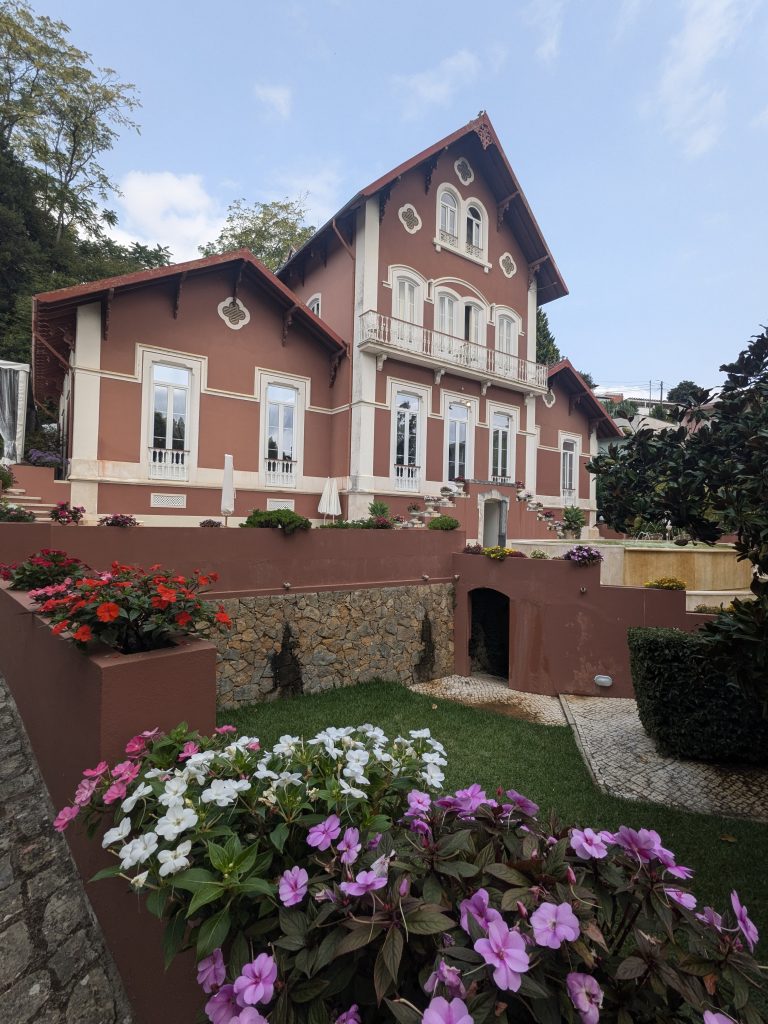
By the time we checked in, I was tired. Bill and I went to a cute restaurant for a quick meal and early bedtime. Taberna Sem Regras – lovely grilled seabass for me.
Sep 18 – Exploring Alcobaca and Vicinity
Fabulous breakfast at hotel. Challet Font Nova is a very elegant inn with beautiful furnishings, a sumptuous breakfast and good location to town.
Alcobaca is a pleasant little town famous for its monastery in the center of town. It probably competes with nearby Batalha and Rick Steve’s suggests Alcobaca as a better stop. There isn’t a lot to do in the town but we are staying two nights minimum in each town.
The monastery was not at all crowded during our morning visit. The Monastery of Santa Maria was built in the 12th century in a Gothic style (simple less ornate decor). It was a church for the Cicerian monks. Our tour of the kitchen, dormitories and meeting halls gave a picture of what monastic life might have been between the 12th and 18th centuries.
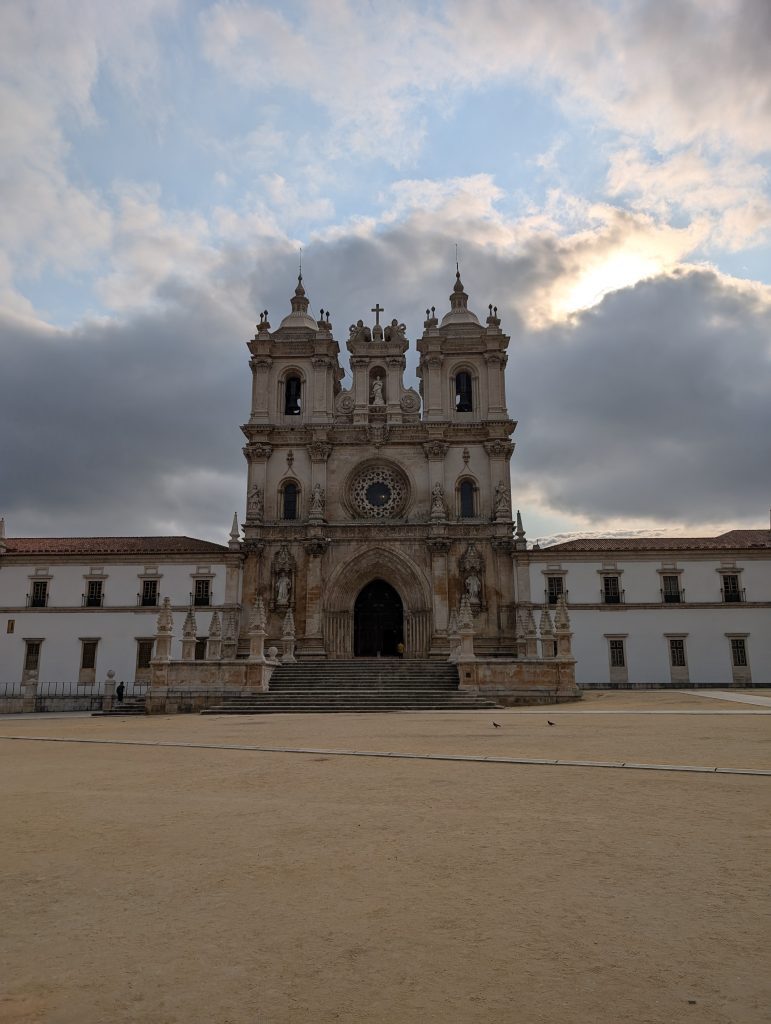
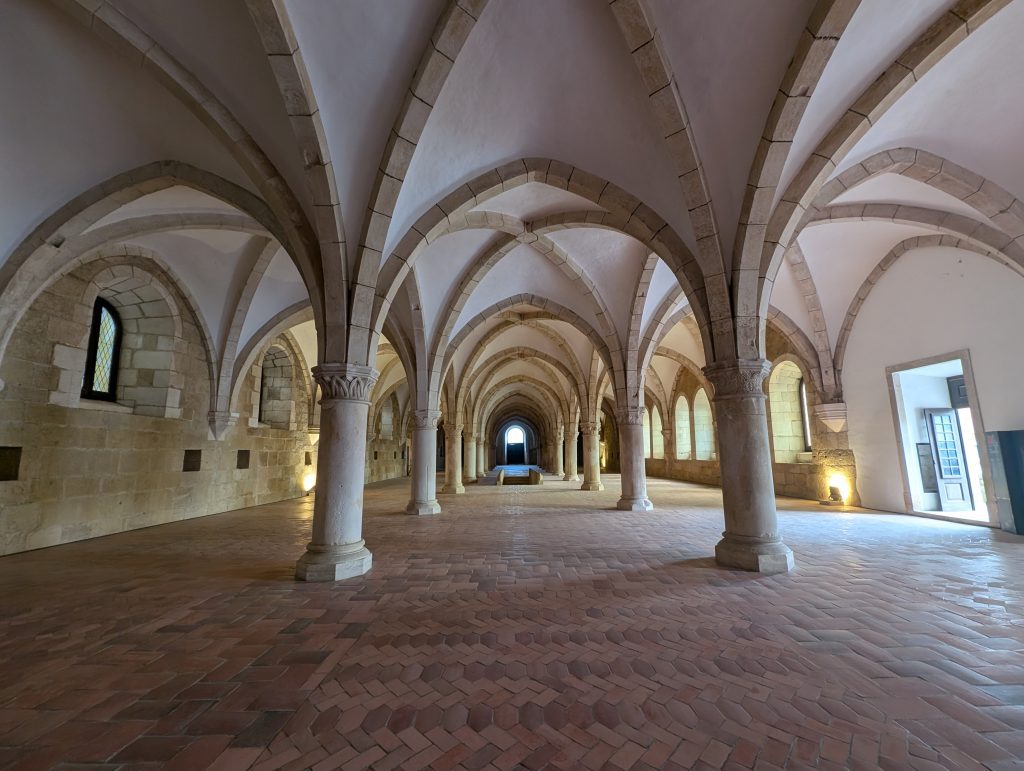
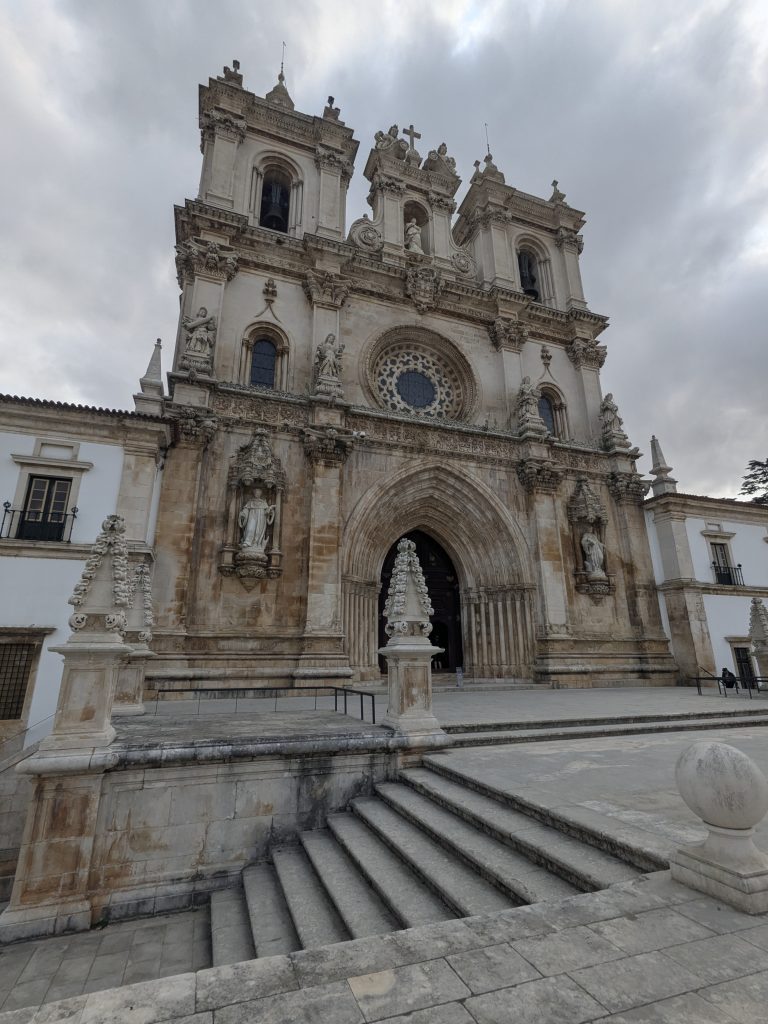
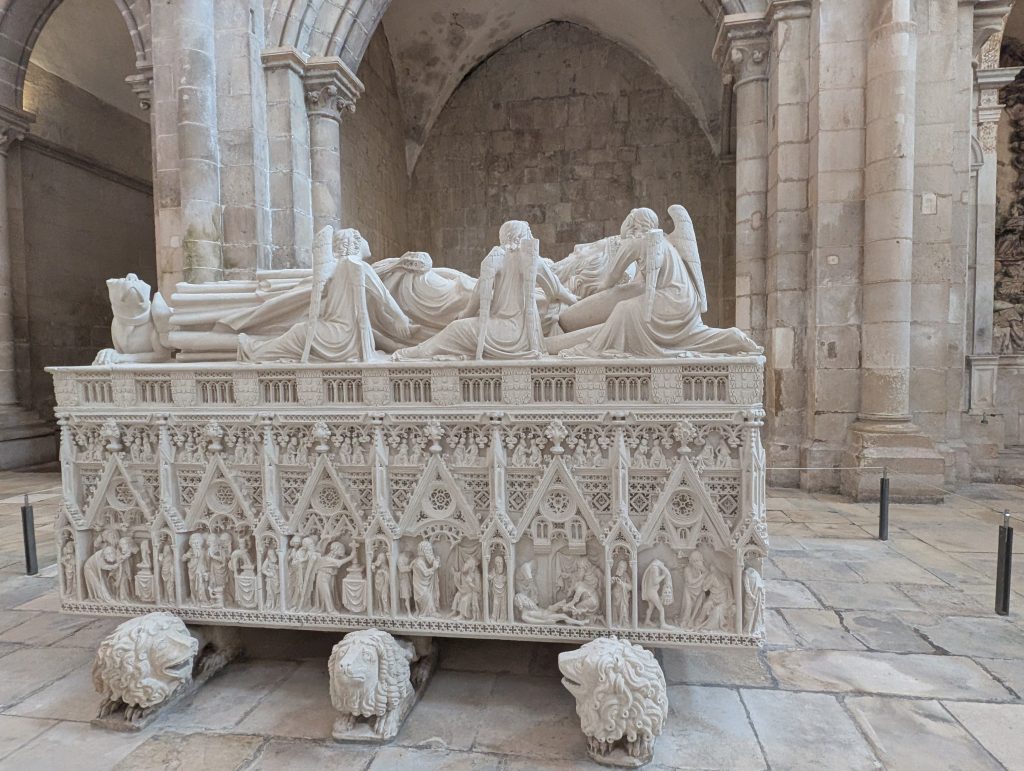
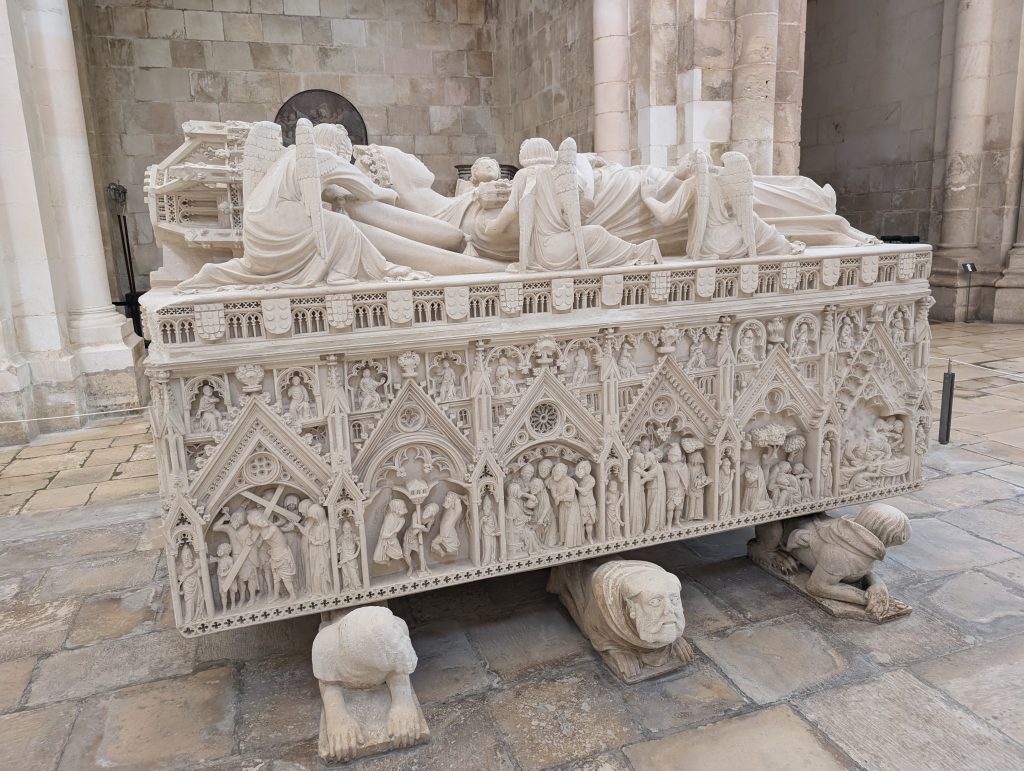
The church is very austere and is known for being the final burial place for the tombs of Ines and Dom Pedro, Portugal’s most known and tragic couple. Dom Pedro, heir to the throne, fell in love with 17 year old Ines a Galician (Spanish) noblewoman. The exact details of their story vary from telling to telling. Pedro secretly met up with Ines in Coimbra while married to wife Constance. His wife died after giving birth to a son. At this point, Pedro and Ines lived together. Even though Pedro’s father, the king, forbade marriage to Ines, the young couple married secretly and had four children. The king feared these children might steal the throne from the first grandson and he had their mother murdered. Legend has it that when the son Pedro became King he had the murderers killed and put Ines’ dead body on the throne. Now the lovers, both long dead, rest together in the church of the Alcobaca Monastery.
Beautiful structures that are empty. In 1834 the king basically outlawed all of the Catholic institutions. The monasteries were stripped of their statues, furniture and even crockery.
The town of Alcobaca is very cute, lots of shops and cafes. The streets near our hotel is a bit rundown and many buildings are abandoned. It didn’t feel unsafe, just sadly neglected.
In the afternoon, we drove to Nazare to see the popular beach town. It was very crowded and parking was a mess. Coney Island of Portugal is well named. So glad we didn’t stay here. We dipped our feet in the very cold Atlantic Ocean water after our seafood lunch at Restaurante O Casalinho. The restaurant had great reviews, lots of open tables, tasty but expensive food and a strong wine. Maybe in the off-season we could get a better sense of Nazare’s more authentic vibes. We did see the “widows advertising their rooms for rent”, a throwback to the pre-Internet days of island hopping in Greece. We tried to see the views up high in Sitio village which sits on the cliffs above Nazare, but it was a crowded hot mess too and we just kept on driving.
Dinner back in Alcobaca at another highly rated restaurant, Pratu. Caught the full moon over the Monastery on our way home. The actual full moon was the night before, maybe in middle of the night. We missed that one.
